Power On
Supercharge Power BI Write-Back, Planning, and Forecasting
Power ON is your toolkit to transform Power BI from a static reporting tool into a true operational planning software suite, complete with real-time write-back and collaborative workflows. Familiar Excel-style inputs and pivot tables empower enterprises to incorporate driver-based planning, what-if scenario modeling, and multi-version simulations without learning a new interface. Power ON makes Power BI write-back and real-time KPI updates easy and flexible, while keeping your data secure.
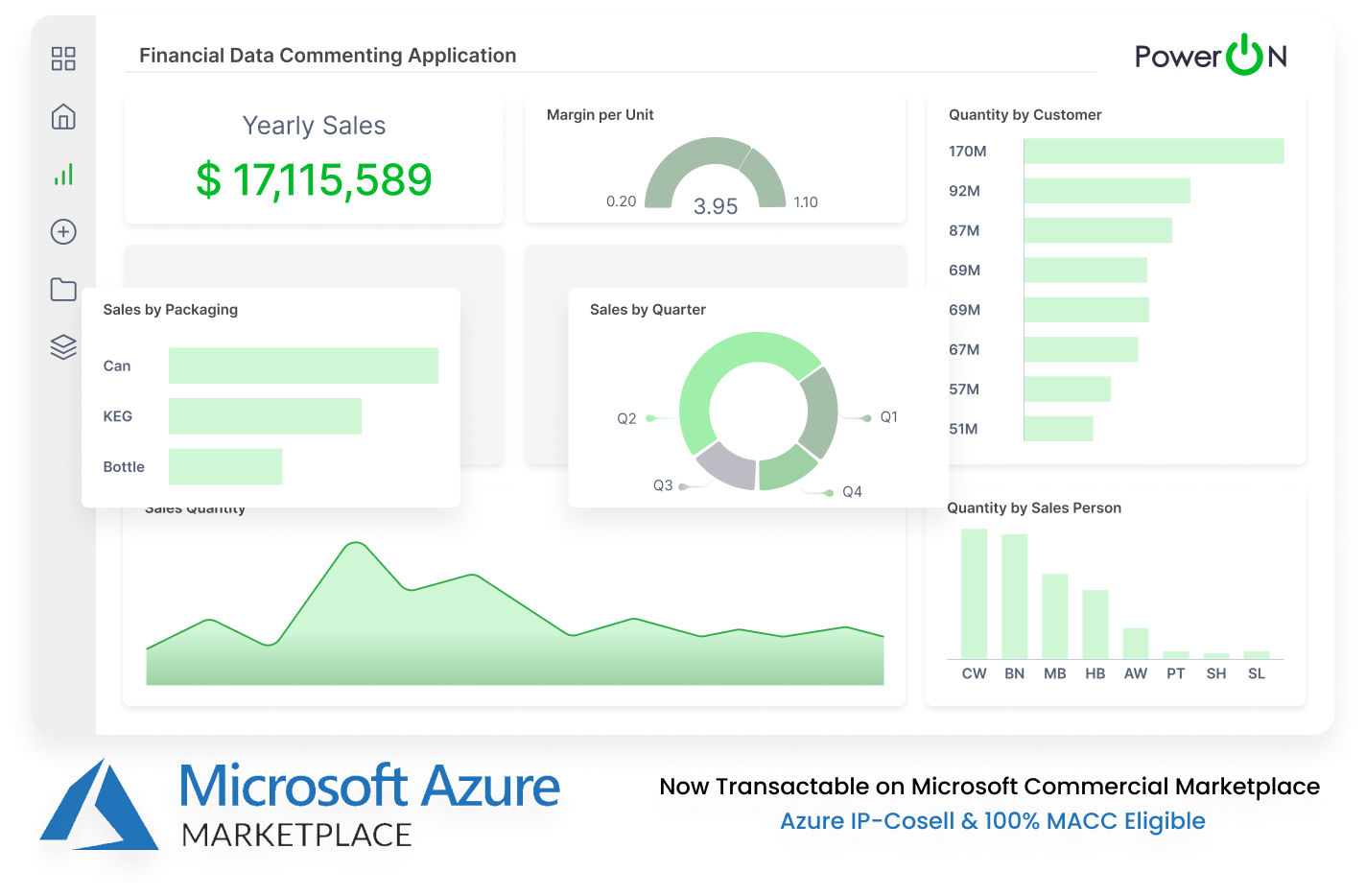
See for yourself why 500K+ users are using insightsoftware to draw instant data insights, react swiftly to market changes, and outpace their competition
Why Do You Need Planning & Write-back in Power BI?

Disconnected Planning Data and Tools
Managing budgeting across spreadsheets, legacy ERP modules, and standalone planning apps can cause inefficiencies and inaccuracies in your planning. Disconnected systems lead to data quality issues and hinder collaboration, making it tough for businesses to achieve financial goals and adapt to market changes. Instead of wasting time chasing down the “latest” Excel file and manually entering numbers into reports, Power ON centralizes inputs, automates data mapping, enforces validation rules, and enables real-time reconciliation.

Can’t Get Beyond Data Visualization and Analysis
Power BI excels at turning numbers into visuals, but it’s crucial to go beyond simple data visualizations for a comprehensive understanding of financial health. Without write-back functionality, you’re unable to effectively analyze your data in a centralized platform. Instead of being held back by manual data exporting and reimporting updates, Power ON adds write-back drivers that leverage a spreadsheet-style UI for familiarity. It also builds dynamic scenario models to iterate faster, with every edit secured with role-based permissions, Single Sign-On, and audit logs.

Ungoverned Data With No Single Source of Truth
Traditional budgeting tools often impede collaboration between teams. As they grapple with sharing insights and updates, decision-making often becomes isolated, resulting in missed opportunities and a disjointed approach to planning. Instead of sticking with these misaligned forecasts, putting up with missed consolidation deadlines, and tolerating lost opportunities, Power ON centralizes discussions with in-dashboard commenting so everyone can discuss numbers exactly where they appear. Version control and approval workflows further solidify this single source of truth.
Power BI Write-Back (Without Power Apps) for Faster Enterprise Planning
Use Power BI for Integrated Planning and Analysis
You already have Power BI, so why make people learn something new? Add planning to Power BI and get driver-based models, what-if scenarios, approval workflows, AI predictions, and team collaboration. Power ON makes Power BI your one-stop planning workspace, not just a place to look at charts. Stop paying for multiple systems and make resource planning easier.
Get Instant Demo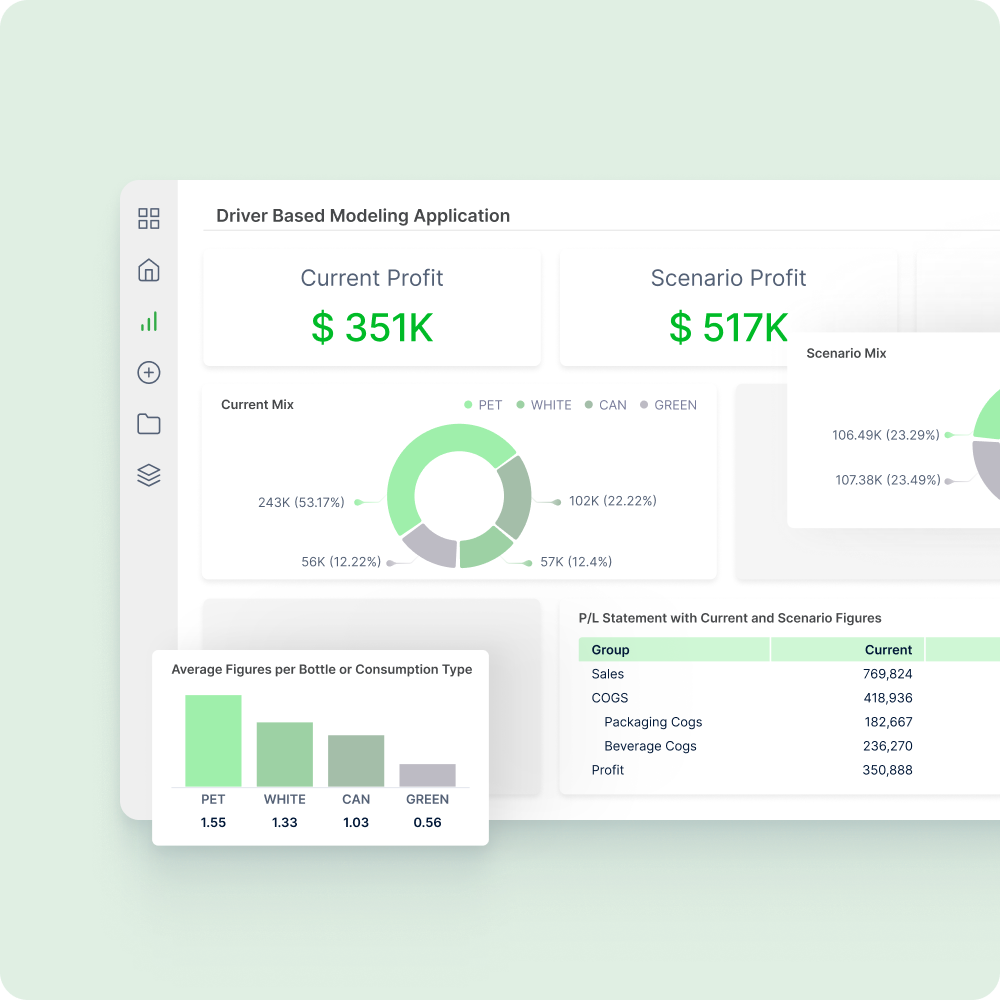
Get Everyone Working in the Same Secure Place—Power BI
Give your teams one secure workspace where they can analyze, plan, comment, update data, and work together in real-time. Build data collection apps without coding to keep information clean and secure. Updates go straight back to your data sources, so no more juggling different databases. When it feels familiar, people actually use it and get more creative with their work.
Get Instant Demo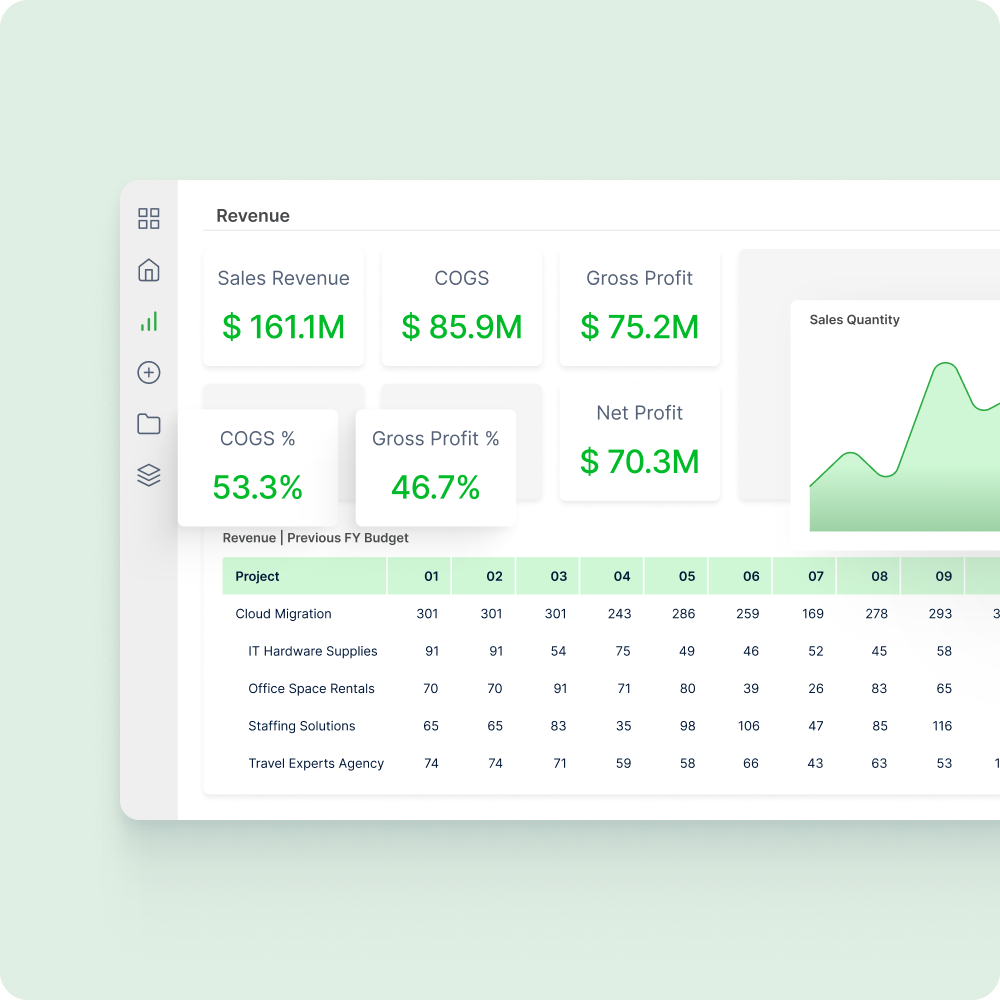
Make Power BI Work Like Excel for Your Team
Let people analyze, enter, edit, copy, paste, filter, and format data right in Power BI. When it feels familiar, people want to use it and become productive. Work with pivot tables, forms, reports, and charts in Power BI just like Excel, with calculations, formatting, and filtering. Update numbers in dashboards and watch visualizations change to match. Plus, you can save changes back to your data sources.
Get Instant Demo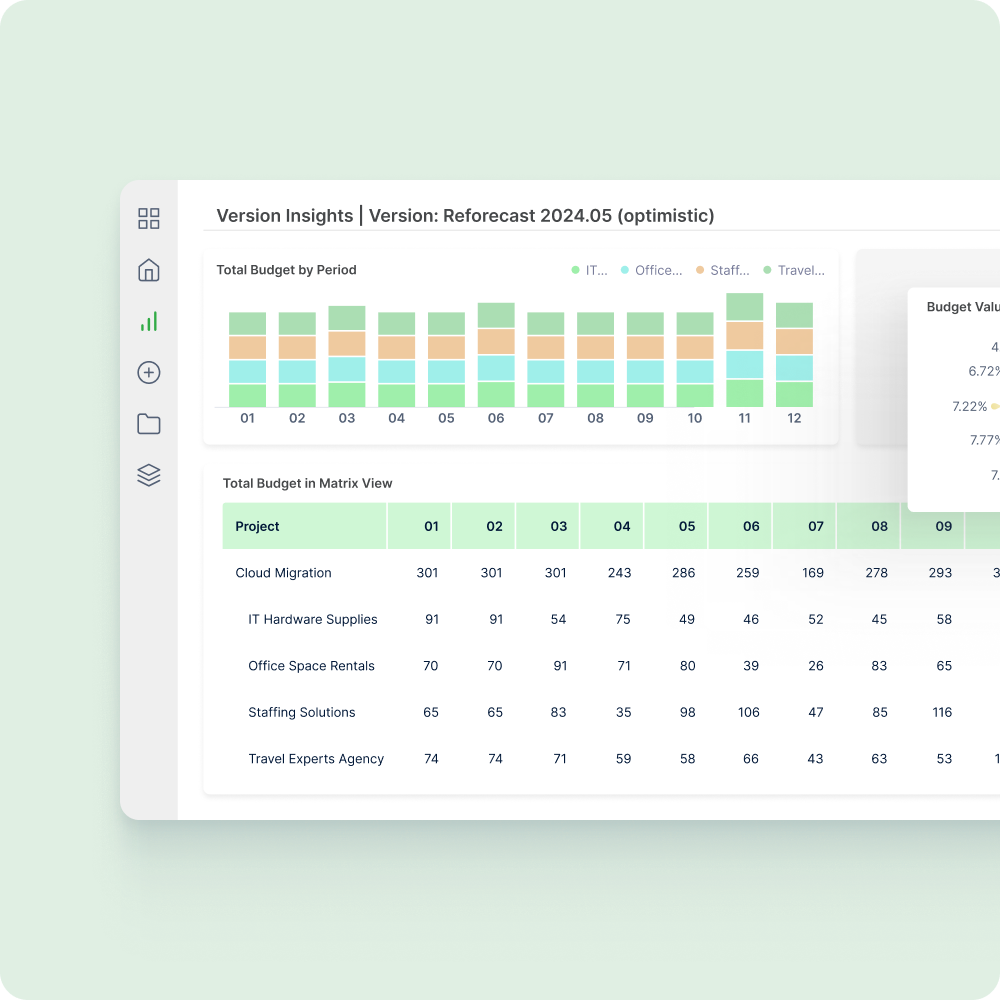
Create Data Collection Apps Without Any Coding
Collect and analyze data smoothly and quickly. Add comments directly to data points. Create data collection tools with version control, workflow management, login security, and role-based permissions. Your teams work together to allocate resources, update capacity limits, comment on availability, and adjust workloads quickly as needed. You can continually track utilization and plan for future needs. Build input forms within Power BI to gather information that feeds directly into your data model.
Get Instant Demo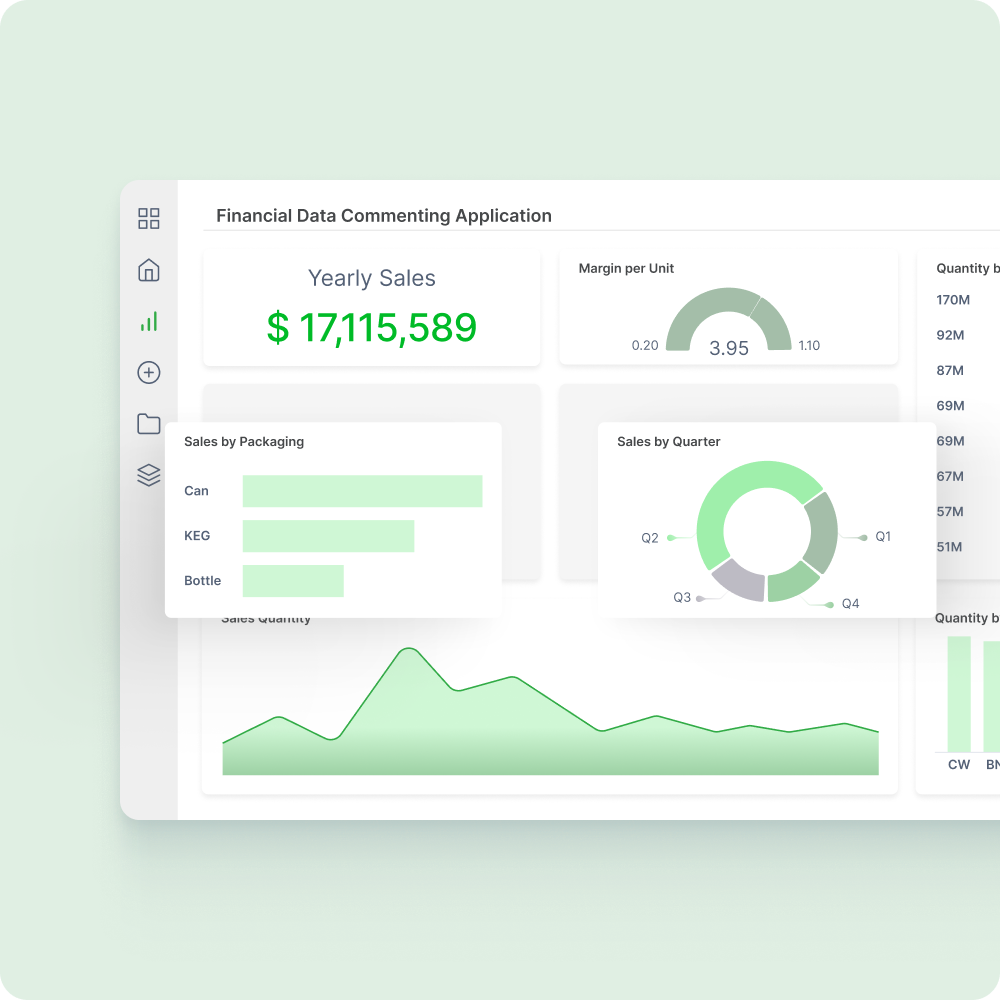
Build Planning Apps in Days, Not Months
Power ON’s Quick Planning Application gets your planning models, data structure, and workflows up and running fast. You get security, version control, approval workflows, and AI that can answer questions about your data instantly. Use planning guidance and best practices to set your business up for success.
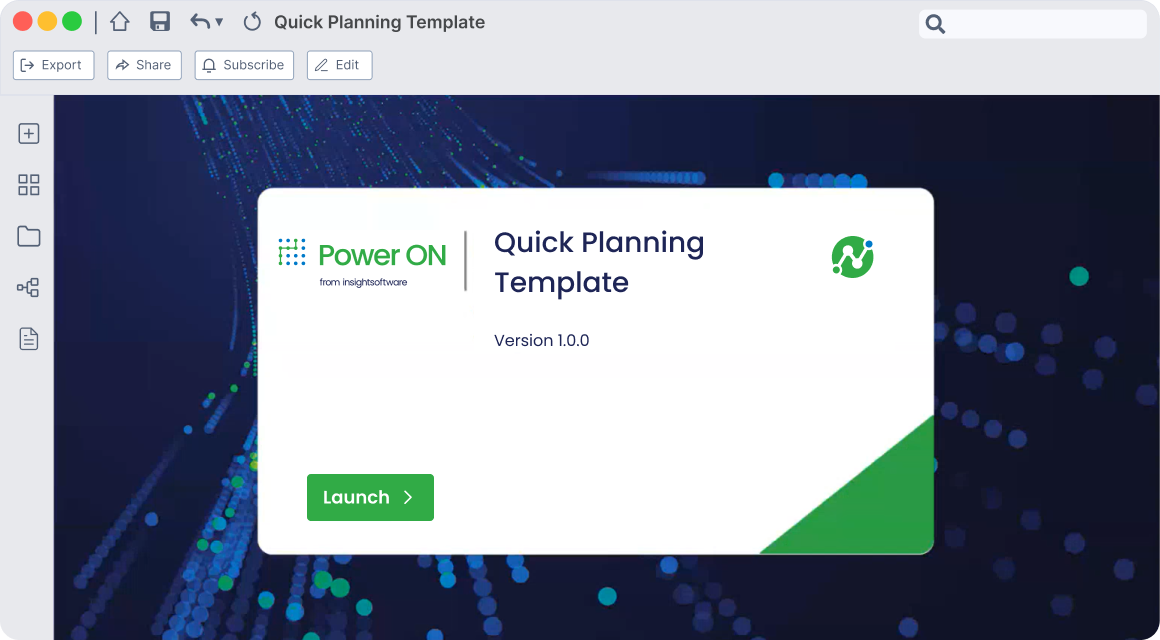
Power ON - Microsoft IP-Cosell Ready
Power ON has achieved IP Co-sell Ready status on the Azure Marketplace, reinforcing our commitment to Microsoft’s trusted cloud ecosystem. Now you can apply your MACC spend directly towards Power ON purchases, simplifying procurement, accelerating deployment, and maximizing your Azure investment.
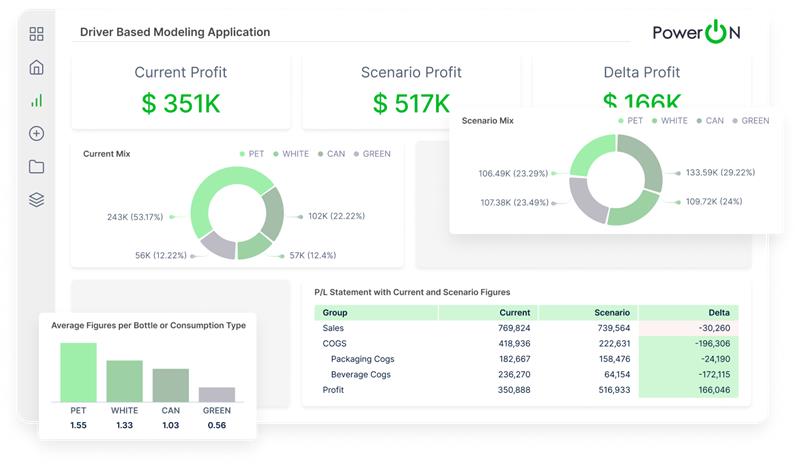
Ready To Turn Power BI Into Your Planning Workspace?
Relying on multiple, locally stored Excel spreadsheets to keep track of your budgets is prone to errors and not sustainable. Plus it blocks you from syncing up for cross-department collaboration. The solution? Power ON Quick Planning Application. It’s your organization’s complete solution for creating unified and structured budgets and plans within Power BI.
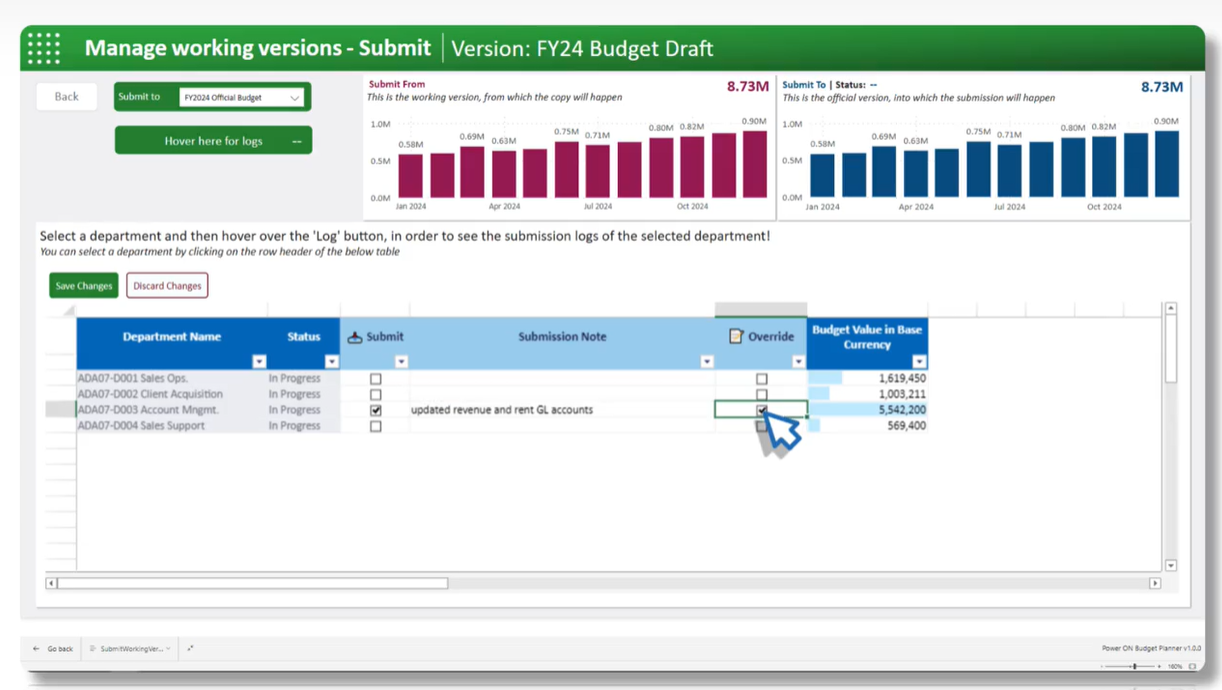


Power ON & Write-Back FAQs
Power ON is our enterprise platform that adds extensive planning, forecasting, and write-back features to Power BI. These functionalities turn Power BI into a full operational planning solution with familiar Excel-style interfaces, modern write-back drivers, no-code data collection, in-dashboard commenting, industry-leading security, and much more.
Power ON’s real-time updates, familiar UI, enterprise controls, and flexible modeling all make it an ideal choice for large businesses looking for better Power BI write-back capabilities. You can edit data inputs and watch your visuals instantly adjust, as well as leverage built-in workflow management, versioning, and role-based access for enterprise-grade security. Even better, Power ON’s driver-based planning, multi-version what-if scenarios, and more all live within your existing Power BI reports, so you don’t have to recreate dashboards from scratch.
Power ON supports all major enterprise stores, including SQL Server (both on-premise and Azure), Oracle, PostgreSQL, any ODBC-compliant source, and many more. Our high-performance data drivers preserve transactional integrity and security, so you never have to worry about data protection.
Every write-back action is logged by Power ON with the associated user, timestamp, and change details. Our version control allows you to snapshot plans or models at any stage to roll back unwanted edits, compare versions side-by-side, and maintain a thorough audit trail. If desired, you can also enforce approval workflows so changes only go live after an approved stakeholder has signed off on the new version.
Power ON is the only tool that combines true in-dashboard write-back with enterprise-level planning features, all within the world’s leading BI tool. It seamlessly integrates with Power BI to eliminate context-switching and supercharges user adoption through its familiar and intuitive Excel-based interface. With enterprise governance (SSO, version history, audit logs, etc.) and scalability built in, Power ON is the go-to Power BI write-back and planning software for large and growing businesses.
Write-back allows users to input or adjust data directly within BI reports or dashboards and save those changes back to the original data source. This creates more interactive visualization environments instead of static dashboards that require manual changes to the backend data in order to update budget figures, tweak forecasts, or correct master-data values.
Traditional data entry typically requires exporting to a separate tool like Excel, manually editing the data, and then reimporting the new data. All of this introduces delays, risk of errors, and potential version conflicts. Instead, BI write-back embeds data capture directly within your analytics layer. In other words, edits can happen in context, dashboards update instantly, and you can eliminate all of those extra steps. Modern write-back platforms like Power ON also enforce data validation rules and workflows, so you can mitigate the risk of bad data getting into your models.
Out of the box, Power BI is read-only, meaning that it cannot push data changes back to your warehouse or transactional system. To initiate write-back in Power BI, a specialized add-on is required to connect your report inputs to your data layer. Historically, the go-to solution for this was Power Apps, but more versatile tools (like Power ON) have become popular alternatives, especially for enterprise-level scenarios. Power ON not only provides a more integrated experience than Power Apps, but also uses a familiar Excel-like interface to minimize learning curves and get your team up to speed more quickly.
Write-back in Power BI can be incredibly useful for operational planning, such as adjusting headcount or expense budgets on the fly. Sales planning might use write-back to allocate targets, update quotas, and visualize impact faster. Beyond planning, write-back is also valuable for Master Data Management (MDM) by editing product hierarchies or cost rates within your BI tool to make sure that all downstream reports remain accurate.
Forecasting uses historical data trends to predict future values like sales volume, cash flow, or resource utilization. Power BI includes a forecasting feature that uses a time-series model to extrapolate upcoming performance for more informed predictions. This is further enhanced by write-back capabilities (like those provided by Power ON), because you can easily modify values within the Power BI environment to check different scenarios more efficiently.
Power BI offers basic built-in time-series forecasting for line charts. Start by creating a line chart with a date or time field along the X-axis, then select the chart and navigate to the Analytics tab. Toggle the “Forecast” option on, and adjust the forecast length, seasonality, and confidence intervals. This becomes even more powerful with a tool like Power ON, because you can use different forecast models, test multi-version scenario simulations, and leverage goal-seeking formats.
Supply-demand planning ensures that inventory, production schedules, and sales forecasts are all aligned in a single, unified view. Power BI doesn’t have a native supply-demand planning module, so you’ll need an integrated solution like Power ON. Using these together, you can input demand drivers (like seasonality or promotions) with write-back grids, model production capacity and supplier lead times, run what-if simulations, and collaborate within the Power BI dashboard itself via comments.















